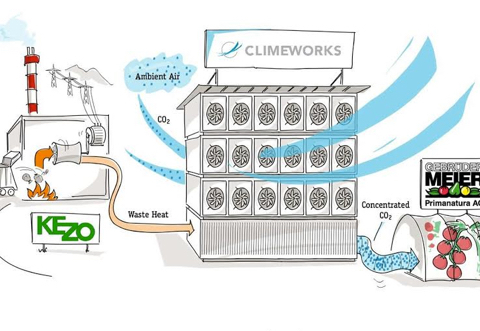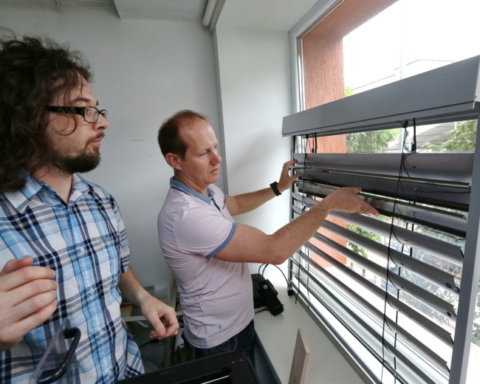Researchers from the University of Illinois have reasons to rejoice. They did as good a job as Mother Nature. Not only did they manage to reduce carbon dioxide (CO2) in the atmosphere, but they also succeeded in making good use of it by turning it into fuel, thanks to a special leaf. Let us take a glance at this promising technology.
Imagine a vehicle that is powered by a clean artificial fuel… Imagine that fuel ultimately replacing petrol. A recent scientific breakthrough achieved by Illinois University researchers among others, gives more grounds than ever to believe in this possibility. Their research was published in the Science journal on 29 July 2016.
First, they replicated photosynthesis. The latter is a natural process of reducing carbon dioxide in the atmosphere by using solar energy captured by the leaves and the water absorbed by the roots. Afterwards, oxygen is released to manufacture carbohydrates. Except that here, the leaf was “built” in a laboratory. Composed of an assembly of thin layers of different metals, it has the size of a leaf (18 cm2) and consists of two silicon photovoltaic cells to collect light. Its mission is to break the molecules of CO2 through exposure to the sun. And instead of carbohydrates, the artificial leaf then produces a synthetic gas formed of hydrogen and carbon monoxide. This gas can be stored and used later as an energy source.
A highly efficient technique
To achieve this spectacular result, the first step was to degrade CO2. The method is familiar – all it took was light, a solvent and a catalyst. However, what was much less common was the ingredients that go into its composition to create an effective and viable substance. This time, researchers counted on “nanoflakes of tungsten disulfide” as catalyst. To act as solvent, they relied on a mixture of water and “ethyl-methylimidazole-tetrafluoroborate.” And that was it.
Despite the looks of it, this downright magic potion is no rocket science. It is much more affordable being “20 to 30 times cheaper” than other previously used mixtures, and this despite “an improved performance by 20,000 to 30,000 times” explained Amin Salehi-Khojin, Assistant Professor in Mechanical and Industrial Engineering at the University of Illinois, Chicago and lead author of the study in La Presse.
Moreover, the synthetic gas proves to be a fuel that can be burned directly or processed into diesel or other fuels. In addition, it is possible to convert 90% of the captured CO2, making it a highly efficient technique and an unprecedented one too. Indeed, previous attempts had proved costly and inefficient. Thus, they could not compete with the fossil fuels that despite their flaws always find favour with consumers due to a lack of viable alternatives.
With carbon emissions set to increase by 130% by 2050 according to the International Energy Agency, it is essential to explore and implement several ways to limit its accumulation in the atmosphere and the numerous side effects that are associated with it.
There is room for hope. The researchers have filed an application to patent it and are now waiting to find industrial partners. If the latter are conquered by the idea, the potential is huge. It will for example be possible to install systems that would capture CO2 escaping from factories and convert it. Or, farms powered by thousands of ‘leaves’ comparable to the current solar farms may emerge. The commercialisation of these fuels would then become a reality – amounting to the fulfillment of a century-old dream for man, and a boon for the planet.














